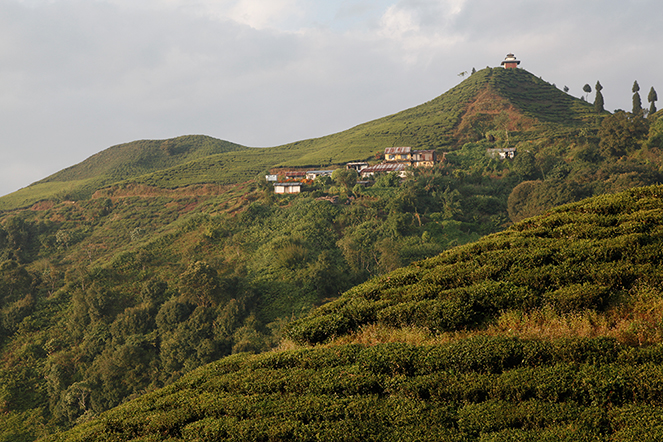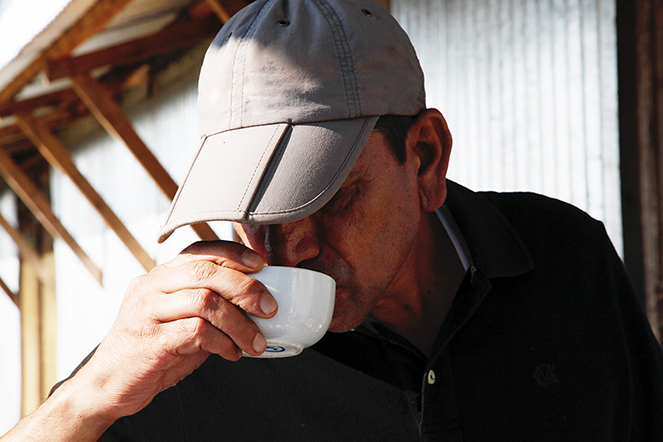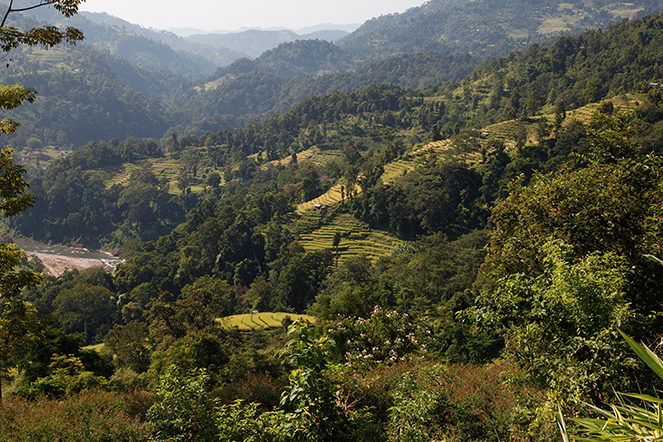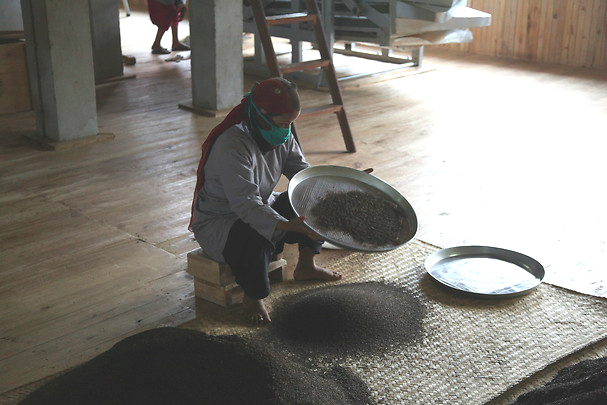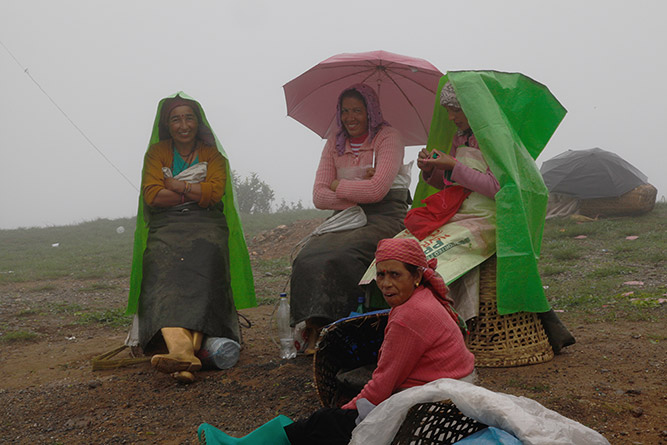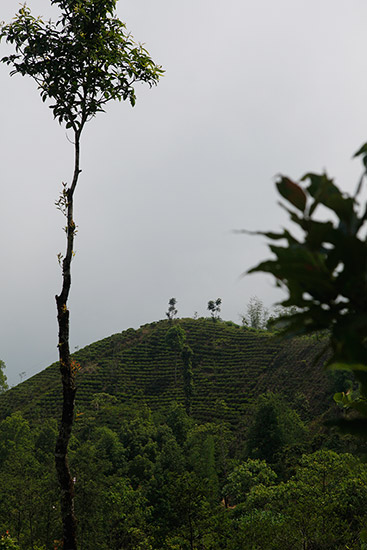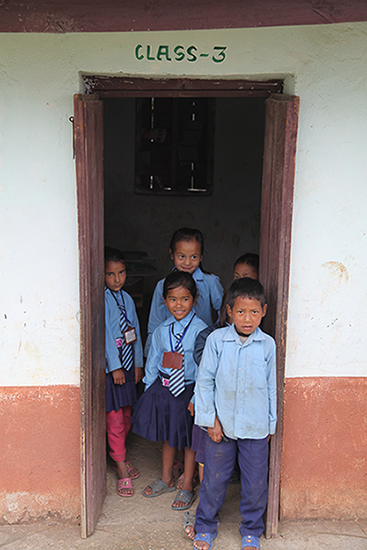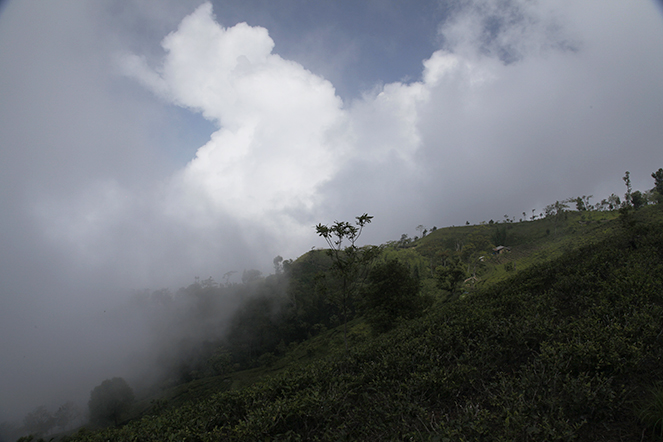Nowadays, the main problem facing Nepalese tea producers is a labour shortage. A significant portion of the population has left to find work in the Gulf countries or in Malaysia. This means the tea is only plucked once a fortnight on some mountains, which compromises its quality. Luckily, the plantations that produce the best teas are less affected. This problem does not only concern tea. The whole of the country’s manufacturing and farming sectors have been hit too.
Nepal
Andrew Gardner: passionate about supporting Nepalese teas
I have just returned from Nepal, where I had the opportunity to spend several days with my friend Andrew Gardner, who came to join me in Ilam valley. He had planned a four-hour walk for me, to reach a village of small producers. Andrew has worked on several plantations, but you could say he was the first to make very good teas in Nepal. We owe the renaissance of tea in the country to him. He started by working at Jun Chiyabari, and he is now applying his talents at Guranse. He’s passionate about what he does.
Nepal: exceptional teas and scenery
Nepal produces some very fine teas, but so few people know about them! You have to travel for hours, and sometimes walk, to reach the mountains where the tea is grown. On the way I admire the scenery, with the paddy fields carved into terraces. The farmers work using the old methods, with the help of a buffalo. Life passes slowly. You listen to the birds sing. They announce the harvest time.
An isolated farm at the end of the world
During my childhood, I spent every summer in Brittany, on a small island without running water or electricity. I learnt to economise on resources. So I don’t feel out of place when I find myself at the end of the world, on a fairly isolated farm with no mod cons. I feel good. I don’t miss anything, other than what is superfluous.
Manual skills are still essential in tea production
In most tea-producing countries, the best teas are plucked by hand. This means that growing high quality tea often requires the participation of many men and women. Not only is harvesting the leaves a meticulous task, but sorting them just before they are packed and dispatched is also done by hand. The work demands incredible patience.
After rice, tea is the agricultural resource that employs the greatest number of people around the world.
It also rains elsewhere in summer
If you are finding the temperatures a bit cool this month, take note that that Western Europe is not the only place where it’s raining. In Northern India and Nepal, July and August are rainy months. It can rain for days on end, but people carry on working unperturbed. Or they take a break for a natter with friends.
Nepal is leading the way in new teas
Among the “Grands Crus” I’ve tasted in recent months, among the many teas from every part of Asia, I have to say that the ones that have impressed me most are the teas from Nepal. Of course, I have been sent wonderful Ichibanchas, unique first-flush Darjeelings, exceptional Oolongs from Taiwan, and richly aromatic Long Jings. Nonetheless, what is happening in Nepal is unique. In the past decade, this country has been working hard to produce teas of a very high quality. And unlike what I see in other countries, where there is a tendency to perpetuate a highly respectable tradition, here people are trying to develop new teas, work with different cultivars, experiment with wilting and rolling methods, and so on. And often, with success.
Loving tea means loving the world
When I visit a plantation, when I go to see a producer, I naturally spend time tasting the tea. But I also look at the growing conditions. I want to find out if the tea is produced cleanly, if nature is respected. For me, loving tea also means loving the ground in which it grows. The tea I drink, the tea that does me good – I don’t want it to harm the earth, or those who grow it. That’s why I also visit the clinics, nurseries and, of course, schools.
Like a Flying Carpet
The Mist Valley plantation takes its name from the lingering mist that envelops the mountains in this region of Nepal. However, from time to time the wind blows away the fog, the clouds dissipate and the sky clears completely. Then this magical landscape is revealed, with the tea fields that appear to hang in the sky, undulating like flying carpets, ready to carry you off over the Himalayas.
Himalayan mist
I am writing to you from paradise,
From a plantation at the end of the world,
Right at the bottom of a valley in Nepal.
A plantation worth finding after hours of walking,
Hidden in the Himalayan mist,
A plantation that makes its tea from the crops of an association of small producers,
A plantation so isolated that the number of visitors can be counted on one hand,
An unknown plantation whose teas are nonetheless worth the detour.
A plantation named Mist Valley.

